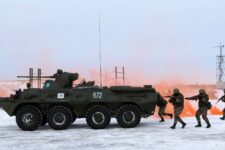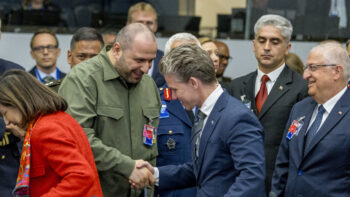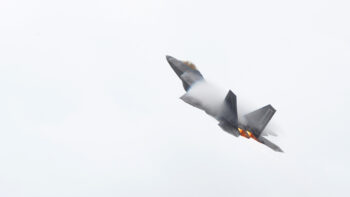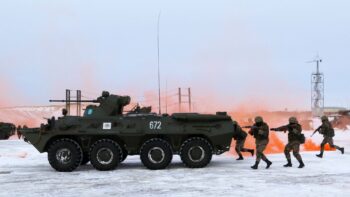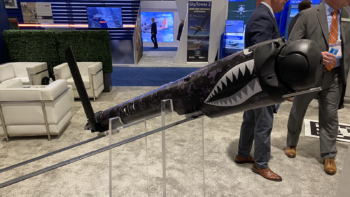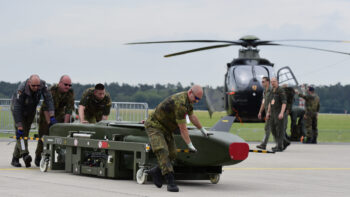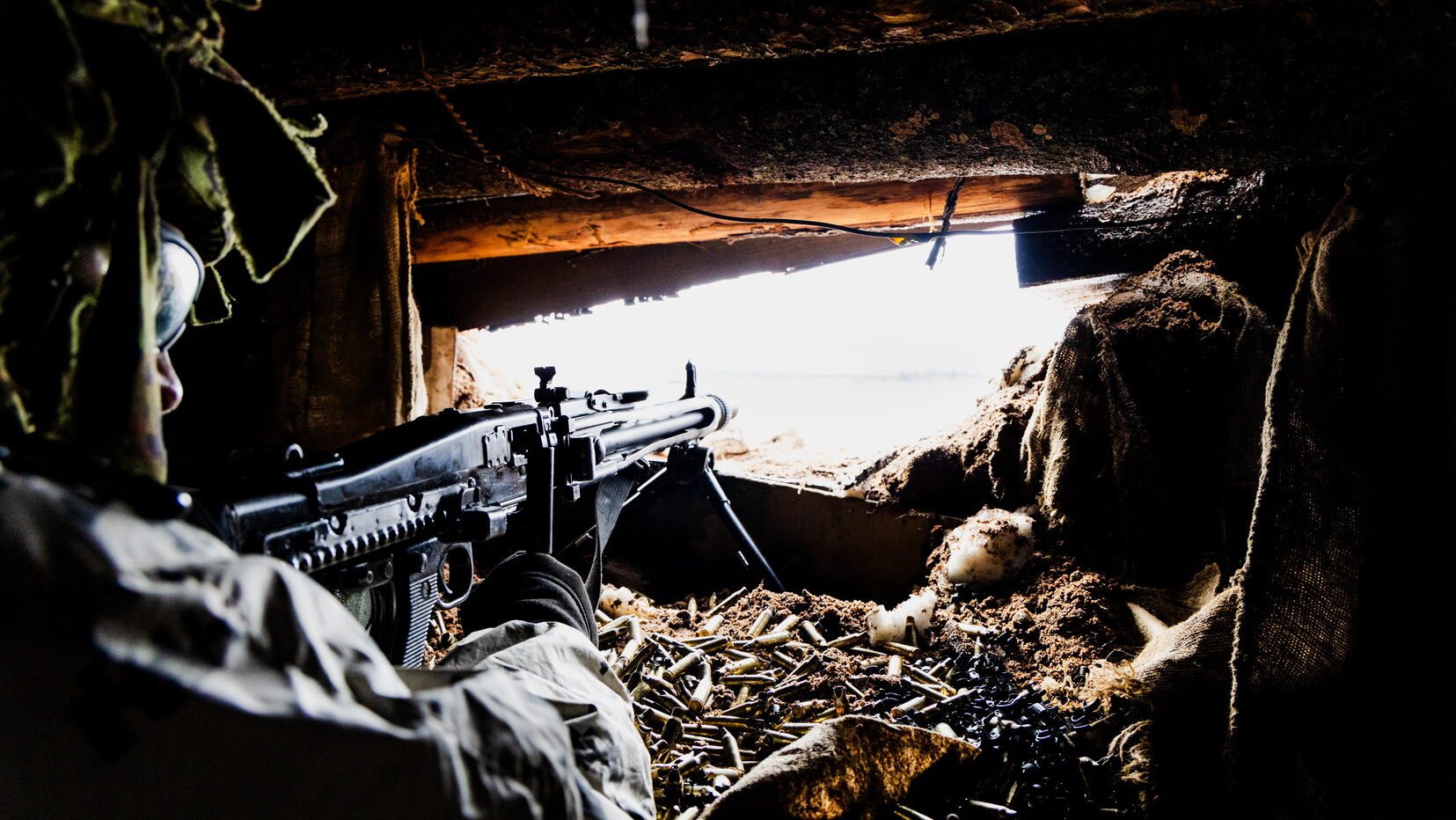
An Estonian soldier takes up a firing position during Exercise Tornado 2024 on April 25, 2024. (Estonian Defence Forces)
TALLIN — As leaders of NATO meet next week in Washington, DC, two major themes are expected to underlie nearly every discussion: Ukraine’s ability to fight off Russian invaders, and the threat that Moscow poses to NATO member nations along its border.
For the Baltic nations, who don’t have to reach far back to remember life under Russian rule, a throwback solution is being developed: a massive defensive line project, consisting of some 600 planned bunkers and fighting positions in Estonia, Latvia and Lithuania, announced in January at a $65 million price tag.
In early May, Gen. Martin Herem, at the time Estonia’s top military officer, laid out his vision of the bunker project, what it should ultimately try to do, how it should be built, and when — while dispelling some faulty assumptions.
“Politically, it sounds like ‘Let’s make a hole and stop them there, every inch and all this.’ That’s stupid,” said Herem, who retired on July 1.
“The idea, of course, is not to stop the Russia[n forces], because if you want to stop [them] on a border, then they will decide from where they break through,” he said before an audience from the Kaplan Public Service Foundation. “So the idea is actually to shape [the invasion]. They may enter to Estonia, whatever, here, and that’s why we need all these long-range [munitions]” in order to strike the Kremlin’s forces wherever they’re funneled.
Herem made it clear the project envisions “positions, not a wall” — stressing, “It’s not the Mannerheim Line” — and he said it would be a miscalculation to think the Baltics should build the entire bunker system now. Rather, he said, Estonia and its neighbors should look at how much of the defensive line could be built with one month’s warning and only buy and build now the parts that cannot be constructed that fast, “spend money only for this.”
The rest of the construction should be done in Estonia, he said, after Tallinn received “indicators” that an invasion was potentially imminent, at which time the infantry, augmented with heavy machinery, would finish construction of the necessary defensive posts “much faster.”
Herem noted that Estonia already has a series of concrete barriers, including dragon’s teeth like those bedeviling Ukrainian forces in parts of their country.
The general’s comments are among the most detailed discussion of the bunker system since its January announcement. At the time, Latvia’s defense minister said that the project could take a decade to complete. In March, local news outlet ERR reported the Estonian government was in discussions with locals in the south whose land would host bunker installations. And during the KPSF trip to Tallinn in May, an Estonian administration official stressed that his country was still at the “very beginning” of the planning process. (Breaking Defense accepted accommodation from KPSF in Estonia and Finland.)
The Baltics are not alone in building out a defensive line. In May, Poland announced a new initiative called “East Shield,” which could eventually total over $2.5 billion in investments along its borders with Belarus and Russia. The mix of physical defenses and surveillance capabilities will, Polish officials said, take into account what the Baltic nations are building.
A spokesperson for the Estonian defense forces did not respond to Breaking Defense’s recent request for an update.
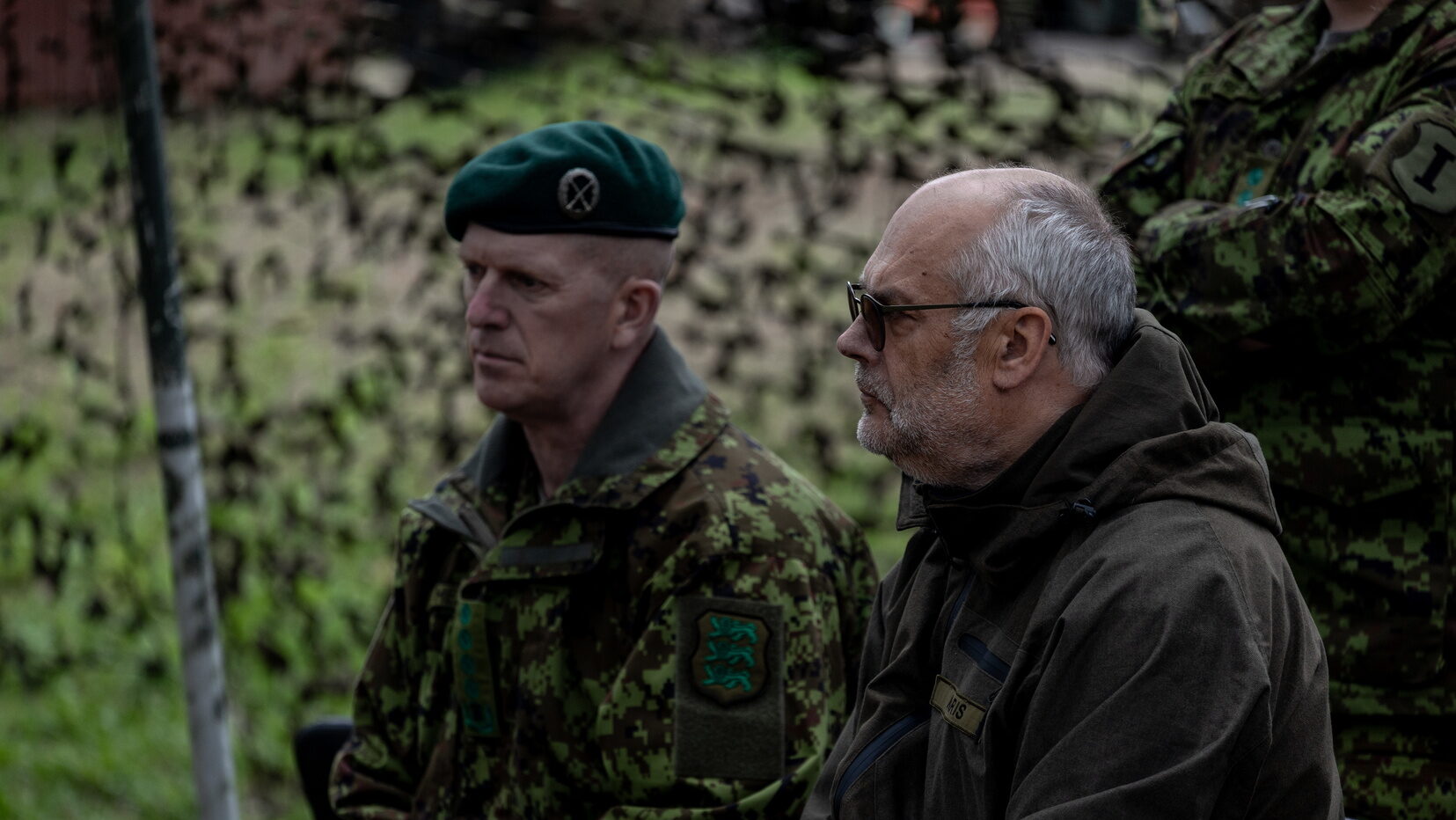
A NATO Victory, But At A Cost
In his comments, Herem made it clear that he doesn’t believe Moscow can deterred. “You cannot deter [a] mad person,” he said, and Russia is “crazy.”
Still he said he believes that the best way to counter Russian aggression is with an overwhelming response. Asked how he would change Russian President Vladimir Putin’s mind about attacking, Herem said it’s “by showing capability, and showing that [whoever many troops Russia sends], they must know that 70 percent are destroyed, the first day, including the troops which are face to face, crossing the border, and the troops which are supporting the aggression, from the, whatever, 200 kilometer distance.”
Herem said one lesson he was taking from Ukraine is that “the only way to stop this aggression [is to] kill them all for crossing your border,” he said.
Those comments may seem hyperbole to those not on the front lines, but Herem noted that his successor, Brig. Gen. Andrus Merilo, could be an even more aggressive defense chief than he was. At the Eurosatory defense show in Paris, an Estonian industry official agreed, shrugged and said, “Hard times call for hard men.”
Both Herem and Merilo know that however fiercely Estonia fights, with a “wartime composition” of 43,000 total, it would need others to join in on its side after the first engagement. In March, Merilo said that’s the idea: Estonia can “halt that first wave and your country will remain and others will come to help.”
NATO would surely win any conventional fight with Moscow, said Herem, considering how much “bigger, stronger, richer” it is, but he said there’s a question about how “ugly is this victory.” But should the fighting reach the streets of Tallin, Herem said Estonia is prepared for that too.
“We will do guerilla warfare. We will stab them from behind in darkness, you know, all of these tricks, no problem,” he said, though he warned there could be terrible “collateral damage,” and “a lot of soldiers will die.”

